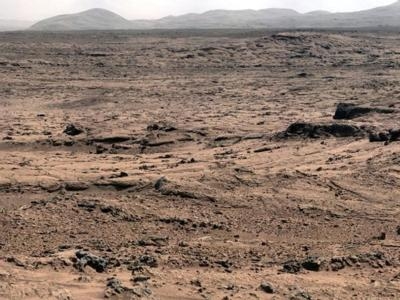Sun, Oct 18, 2015
In Situ Resource Utilization Challenge Offers $10,000 First Prize
Living off the land is different when the land is 140 million miles away, so NASA is looking for innovative ideas to use in situ (in place) Martian resources to help establish a human presence on the Red Planet.

The In Situ Resource Utilization Challenge offers the public an opportunity to submit designs for structures on Mars that would use existing material. The agency plans to award $10,000 to the first-place winner, with $2,500 each for two second-place submissions.
NASA’s Chief Scientist Ellen Stofan announced the challenge at an event Wednesday honoring the five-year anniversary of the government-wide platform Challenge.gov.
“NASA’s newest challenge is yet another stellar example of the agency’s commitment to harnessing the ingenuity of citizens as we seek to expand the frontiers of knowledge, capability and opportunity in space. Exploring Mars and other worlds is a herculean endeavor. Like other agencies across the federal government, NASA recognizes that our success will be enhanced greatly by involving people with all kinds of knowledge, skill sets and ideas in our work,” said Stofan.
One advantage of using resources from the planet instead of bringing everything from Earth is the potential to save the agency more than $100,000 per 2.2 pounds (1 kilogram) of cargo each launch.
The challenge is run by NineSigma Inc. as part of the NASA Tournament Lab (NTL). The NTL works across NASA and the federal government to provide crowd-based challenges as a way to solve difficult problems and get work done. It’s being conducted in collaboration with Swamp Works, a lab at NASA’s Kennedy Space Center in Florida dedicated to finding creative solutions for the problems that come with deep space exploration, including the journey to Mars.
“In situ resource utilization is key to our exploration of the universe,” said Robert Mueller, senior technologist at Swamp Works. “We must find ways to make what we need once we are at our destination. For example, the soil on Mars could be used to make modular structural building blocks to make shelters, landing pads and other useful structures. We are looking for creative and novel solutions from all types of people.”
(NASA image from file)
More News
From 2023 (YouTube Edition): An Even Faster Rolling Extra! Jim Campbell joined General Manager of Extra Aircraft Duncan Koerbel at AirVenture 2023 to talk about what’s up and>[...]
“Receiving our Permit to Fly and starting Phase 4 marks a defining moment for Vertical Aerospace. Our team has spent months verifying every core system under close regulatory>[...]
Middle Marker A marker beacon that defines a point along the glideslope of an ILS normally located at or near the point of decision height (ILS Category I). It is keyed to transmit>[...]
The Experienced Pilot Chose To Operate In Instrument Meteorological Conditions Without An Instrument Flight Rules Clearance Analysis: The airplane was operated on a personal cross->[...]
Also: ATI Strike Prep, Spirit Still Troubled, New CubCrafters Dealership, A-29 Super Tucano Samaritan’s Purse is officially moving its historic Douglas DC-8 cargo jet into re>[...]
 Classic Aero-TV: Extra Aircraft Announces the Extra 330SX
Classic Aero-TV: Extra Aircraft Announces the Extra 330SX Aero-News: Quote of the Day (11.15.25)
Aero-News: Quote of the Day (11.15.25) ANN's Daily Aero-Term (11.15.25): Middle Marker
ANN's Daily Aero-Term (11.15.25): Middle Marker NTSB Final Report: Lancair 320
NTSB Final Report: Lancair 320 Airborne 11.14.25: Last DC-8 Retires, Boeing Recovery, Teeny Trig TXP
Airborne 11.14.25: Last DC-8 Retires, Boeing Recovery, Teeny Trig TXP



